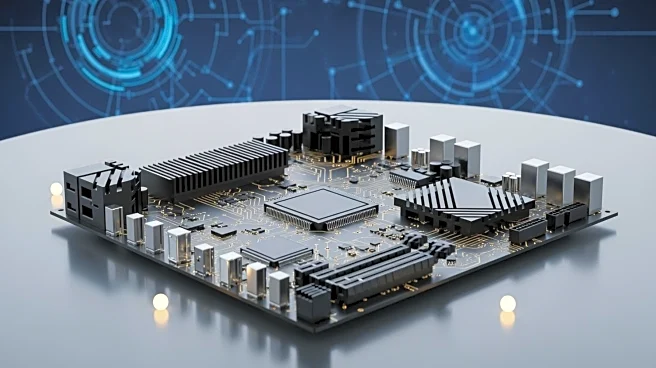What's Happening?
AMD has completed the divestiture of its ZT Systems data center infrastructure manufacturing business to Sanmina. This strategic move allows AMD to retain ZT Systems' design and customer enablement expertise, which is crucial for accelerating the deployment
of AMD AI systems for cloud customers. Sanmina, now a preferred manufacturing partner, will help enhance the quality and speed of AMD's cloud rack and cluster-scale AI solutions. This partnership aims to strengthen AMD's ecosystem of ODM and OEM partners, marking a significant step in AMD's data center strategy.
Why It's Important?
The divestiture and partnership with Sanmina are pivotal for AMD as it seeks to expand its influence in the AI and cloud computing sectors. By retaining ZT Systems' expertise, AMD can continue to innovate and deliver high-performance solutions to its cloud customers. This move is expected to enhance AMD's competitive edge in the rapidly evolving tech industry, potentially leading to increased market share and revenue growth. The collaboration with Sanmina also underscores the importance of U.S.-based manufacturing in maintaining quality and flexibility in product deployment.
What's Next?
AMD's strategic partnership with Sanmina is likely to result in faster deployment of AI systems, benefiting cloud customers with improved performance and scalability. As AMD continues to push the boundaries of high-performance computing, further innovations and product introductions are anticipated. Stakeholders, including investors and tech industry leaders, will be closely monitoring the outcomes of this partnership to assess its impact on AMD's market position and financial performance.
Beyond the Headlines
This development highlights the growing importance of strategic partnerships in the tech industry, particularly in the AI and cloud computing sectors. The collaboration between AMD and Sanmina may set a precedent for other tech companies seeking to enhance their manufacturing capabilities while retaining critical expertise. Additionally, the focus on U.S.-based manufacturing could influence broader industry trends, emphasizing the need for domestic production in maintaining competitive advantage.















